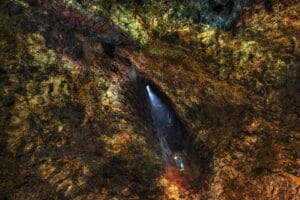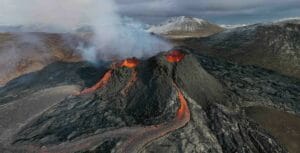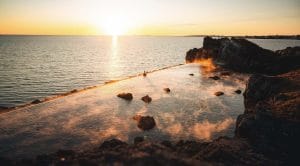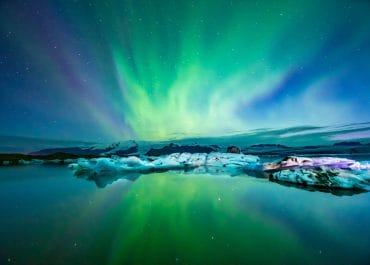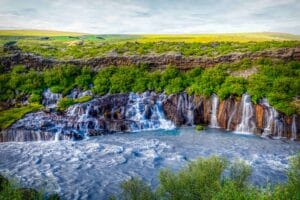





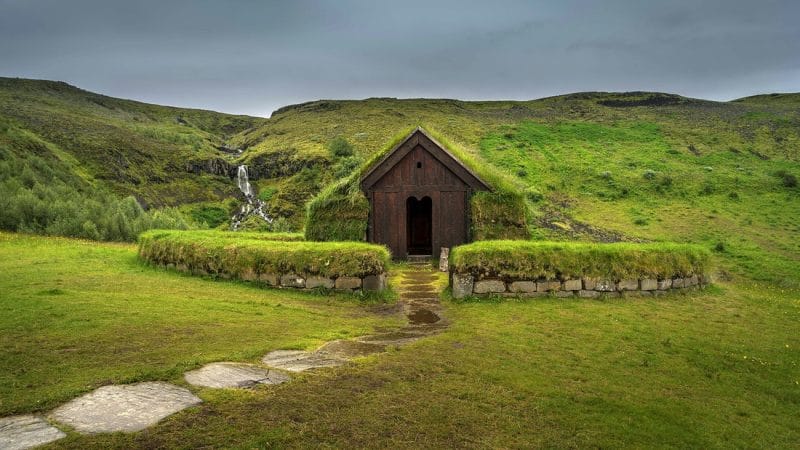













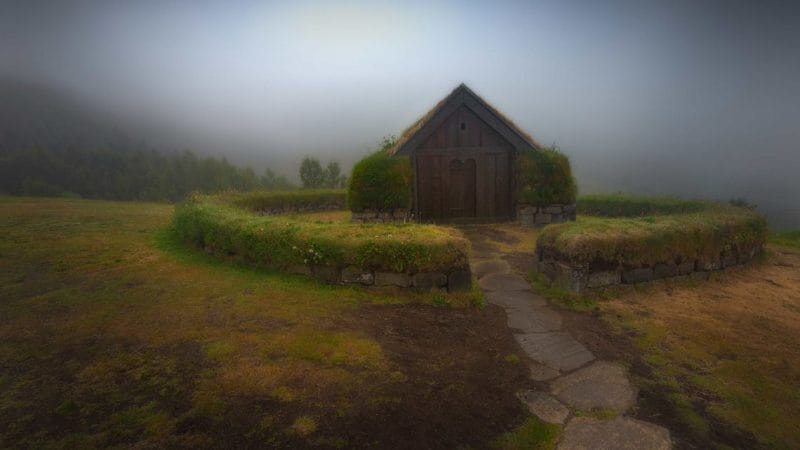
The golden circle is not something that would never require a special introduction for anyone who has been planning a trip to Iceland for quite some time. The route that houses some of the most visited attractions in the country, the Golden Circle is nothing but a route that connects the top 3 attractions of Iceland – Thingvellir National Park, the Geysir Geothermal Area, and Gullfoss waterfall. There is hardly any touring agency and company that doesn’t mention a tour of the golden circle as the top contender on the list of the most preferred activities in Iceland by the tourists. The golden circle attractions are world-renowned for their exceptional beauty and uniqueness and the best part is that all three of them are quite close to the capital city of Reykjavik.
There is no doubt that the famous triple-trouble of the golden circle is what makes it so famous among the locals and the tourists alike. However, the golden circle is a lot more than what is known by the general public. You can also explore the golden circle with a twist, also known as the Hidden Circle. The hidden circle consists of a few more locations along with the three main ones bringing the grand total to seven instead of 3. While there are many other destinations one can visit when traveling around the golden circle but all of them are located at least a small detour away for example the Secret Lagoon. Although the four added destinations that the extended version of the Golden Circle comes with do not bring you off route every single time you want to visit something other than the top three destinations. Let us go through the destinations that come along the extended version of the golden circle and know what it has in store for the valued tourists of the land of ice and fire.
If you would like to add some more stops to your trip, you might want to check out the article on the secret locations in the Golden Circle.
Thingvellir National Park

Setting out from the national capital of Iceland, Reykjavik, the Thingvellir National Park is the very first stop on the tour of the golden circle. Thingvellir National Park is one of the three national parks in Iceland and the only UNESCO world heritage site in the country as well. Iceland is a volcanic island that is located on two different tectonic plates – the North American Plate and the Eurasian plate. Thingvellir National Park is the place where you can actually see these two plates above the surface of the earth – only the very few places in the whole world where one can see the tectonic plates in their actual physical form. If you get to it, exploring the Thingvellir National Park alone can get you through the day given the fact that it is so huge and filled with several different geological formations.
Thingvellir National Park is also the site where the first parliament building of Iceland was erected. There is a new building that has already been constructed in the capital city now which is used as the functional parliament but the first one still stands tall in the park and is open for visitors. Meetings were held in Thingvellir; conflicts were resolved and even punishments were delegated. Some of these punishments even included capital punishments like an execution. From the history of the formation of the earth itself to the formation of the history and political stand of Iceland, there is probably nothing that you would not get to learn here in Thingvellir National Park.
There are lava fields, mountains, gorges, streams, rivers, volcanoes, plains filled with lush green vegetation, and many more. The most notable of these attractions is the Silfra fissure which is located between the two tectonic plates and was created as a result of drifting away of the two plates from each other. Silfra is the most popular spot in Iceland for snorkeling and diving. The water is always at a constant temperature of 2-3° C which means that snorkeling here is possible in all seasons regardless of how cold it is outside the water.
From being the site of Iceland’s controversial witch trials, criminal executions. Parliamentary meetings, conversion of the main religion of the country to Christianity, there is very little from the history of Iceland that Thingvellir has not witnessed which makes it a top-tier place to add to your travel itinerary. Adding on to the packaged deal is the scenic beauty of the place which makes everything several folds better for the ones hoping to discover mother nature.
The Geysir Geothermal Area

The next stop after the Thingvellir National Park is the Geysir Geothermal Area – a huge field filled with hot pools filled with steaming hot muddy water and several big and small geysers. This particular place will give you a better visual of the extensive volcanic activity that Iceland is popular for. The drive to Geysir from Thingvellir is about 50 minutes long. You will start to see the steam rising from the ground way before you actually reach the place, right around the Haukadalur valley. A nearby settlement, the village of Laugarvatn, even has a spa that is powered by the heated water from the geothermal area.
Geysir Geothermal area is dominated by hot pools, clay pots, fumaroles and, not to mention, the geysers. Although what has made the Geysir Geothermal area so popular among tourists are the two marvelous geysers that are located here – one active and one dormant. The area itself is named after one of these geysers – Geysir – the bigger one of the two. Geysir is now dormant and has not erupted for a very long time but when it was active, Geysir used to shoot water till the height of over 120 meters in the sky – it truly was a sight to experience at least once in a lifetime.
The first few times Geysir stopped erupting, people tried to re-start it by digging channels into the silica ring around the geyser. It worked for a few initial times before the geyser stopped ultimately, for good when the channels were clogged. The only way to restart it was by pluming in the soap in the channels but may have had some serious harsh consequences that the environment would have faced. So, the whole activity was forced to stop, for good. Geysir still erupts, but very occasionally. The last eruption happened in the year 2000 when Geysir went up to 122 meters. The highest streak was recorded in the year 1845 when Geysir shot up to 170 meters.
However, now, Strokkur is the star of the show with its water gun that shoots up at a height of 20 to 40 meters. Strokkur erupts 5 to 10 minutes which means that no matter how much time you spend here on this destination, you will surely get to see at least one eruption during your travels. You will find a beautiful little gift and boutique shop right across the geothermal area where you can find many handcrafted beauties to take home as souvenirs. There is also a restaurant near the shop where you can find some very delicious snacks to eat in the form of traditional Icelandic food.
Gullfoss Waterfall
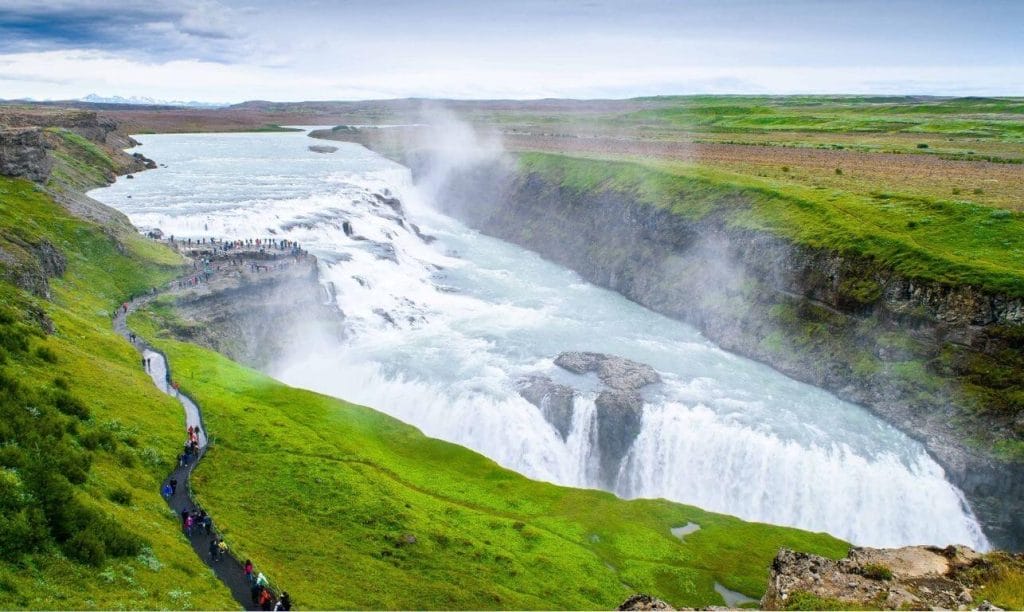
Skógafoss is not the only waterfall in Iceland that is popular for the gorgeous rainbow that it forms in the gorge as the water plums down with incredible speed. Gullfoss of the Golden Falls is one of the most remarkable and popular waterfalls in Iceland, simply for its raw power and exceptional beauty. Gullfoss is located only 10 minutes away from the Geysir Geothermal area. Gullfoss has two separate prominent drops and the total height of the waterfall is 106 feet high with the bigger drop being 69 feet. What is truly surprising is the width of the waterfall. The average of the waterfall is 575 feet while it gets 750 feet at its widest. The waterfall is fed by river Hvítá and pours down about 140 cubic meters of water per second – imagine that it is absolutely breath-taking.
The sight over here around the Gullfoss waterfall is of a different sort. The water falls down in a gorge that is filled with black colored boulders and rocks and creates so much foam that it is often impossible to see the bottom of the waterfall. Moreover, the foam that rises from the waterfall results in the formation of beautiful rainbows in the gorge. The summer season fills the gorge and the walls of the valley with lush green vegetation and moss that contrasts beautifully with the electric blue water of the waterfall and the snowy white foam that it creates. Come winter season, the valley is filled with snow all over resulting in a complete change of the scenery. The waterfall doesn’t freeze in the winter season so the landscape that the tourists land on is out of this world, to be completely honest. Imagine – blue water falling down in an enormous black-colored gorge which is completely covered with snow, glacier peeping over the horizon in the distance as the nearby area gets covered in the foam and increases the mystical appeal of the place.
Visiting the Gullfoss waterfall can be one of the most magical appearances that you have during your travels in the country. However, remember to dress up for the occasion as there is a fair chance that you will get splashed with water when standing close to the waterfall. A failed attempt at building a dam on this gorgeous waterfall in the early 20th century. The land on which Gullfoss is located was owned by Tomas Tomasson, who took this offer from foreign investors and loaned someone for the job. However, this venture was stopped by the efforts of a very brave woman named Sigridur Tomasdottir, Tomasson’s daughter. She did everything in her power to stop the project including threatening to throw herself in the waterfall and marching to the capital bare-feet. Her actions drew immense attention to the case and eventually helped her lawyer to take the lead and stop the project. This lawyer, Sveinn Bjornsson, went ahead and became the first president of Iceland. Needless to say, not even a single natural wonder is free of a significant historical event that shaped up the country to be what it is today.
Secret Lagoon

The secret lagoon is all that the blue lagoon is but without the overbearing crowd and the hazy milky blue waters. The secret lagoon is the oldest hot pool in Iceland. It was closed for a while after being built-in 1891. But it started once again after some renovations and a change in the ownership. The secret lagoon is is everything that one would expect a hidden hot pool to be like in the midst of unwinding natural beauty. The biggest attraction of the Secret lagoon has to be the lack of crowd, lack of most artificial elements and attraction, and the pure natural vibe that it has. You can find all the basic facilities like separate changing rooms at the Secret Lagoon.
Hjálparfoss

Also known as Help’s Falls, Hjálparfoss is a beautiful little waterfall located in Þjórsárdalur valley and is fed by river Fossá. The waterfall falls in a gorgeous, wide pond where one can often find locals taking a dip in the summers. The waterfall itself is divided into two parts by a huge basalt rock. This rock is often perceived as if it has the shape of the head of a bear, which is actually quite evident too – given the black-brown color of the rock and the cuts. It’s not just the rock, all other rocks that surround the waterfall are all gorgeous basalt columns that look fantastic when combined with the blue and white water of the falls. The scenery takes a turn for the better as the winter season comes. The whole area is covered with snow in winters and most parts of the waterfall also freeze.
When visiting the waterfall from the top instead of the gorge, you will see that most part of the land is covered with lush green grass in the summer season. This grass is essentially the reason that Hjálparfoss got its name. In the olden times, this particular waterfall and its surrounding area served as a place for grazing the horses for the travelers who had just traveled through the barren land of Sprengisandur in highlands. Since the waterfall and its lush surroundings ‘helped’ them, the waterfall got the name Hjálparfoss or help’s falls. The waterfall is located on road number 32 and is the first stop out of the additional 4 locations of the extended golden circle tour.
Þjóðveldisbærinn Stöng

Located in Þjórsárdalur valley, Þjóðveldisbærinn Stöng is a reconstructed version of an old Viking village. Ruins from ages-old real Viking settlement can be found all over the village. Some of these ruins have been reconstructed while the rest remains to be the same. One of these especially reconstructed elements or places of the village includes the Þjóðveldisbærinn – Saga-Age farm. It is a Viking turf longhouse. The village of Stöng was destroyed when the volcano Hekla erupted for the first time in the year 1104 in Iceland after the settlement. The eruption destroyed over 22 settlements in its vicinity and the Þjórsárdalur valley. Stöng was the only town that was be recovered out of all those that were examined for the purpose of restoration.
The remains of Stöng were excavated by the archaeologists in 1939 which were buried under a thick layer of pumice. A replica of the turf farmhouse has been rebuilt in Stöng that houses all the excavated items from the ruins except for those few that have been donated to the National Museum of Iceland. You will find a lot of Viking stuff and ornaments here. Apart from the recovered Viking things, you will find a cute little barn as well as the church in this village. It is a well-worth trip for all the history buffs who are interesting in experiencing the Viking era for real. Not to mention, you can also dress up like a Viking here if you like and actually live the life of Vikings for a little bit of time that you spend here.
Gjáin

Moving forward on the same route 32, you will reach the small valley or oasis – Gjáin that is located at a distance of only half an hour from the Viking village Þjóðveldisbærinn Stöng. Filled with small picturesque waterfalls, small ponds filled with clear blue water, lush green vegetation all around, and a beautiful volcanic structure, Gjáin is somewhat like a small sample space that represents the beauty of Iceland. The reason that Gjáin is known as an oasis is that it literally appears out of nowhere suddenly as you follow the same route 32 after exiting Þjóðveldisbærinn Stöng. You can expect to find gorgeous lava structures here including lava caves along with basalt columns.
Gjáin is more popular in the summer season since it gains the best shape and colors as soon as the summer months take over and the sun begins to shine. The Winter season does not do much justice to the land since the snow takes over the landscape and hides all the other vibrant colors. However, summer is completely different, so much so that you will actually expect to see elves and spirits dancing around the waterfall of the valley. And it is a popular notion among locals that spiritual energy is quite high in Gjáin so there is a chance that you will feel it as well. Another thing that adds to the charm of this little valley is that it was one of the shooting locations for the popular HBO show Game of Thrones.
Háifoss Waterfall

Being the third highest waterfall in Iceland, Háifoss cuts into the most important places to visit when in Iceland very easily. This beautiful waterfall is fed by Fossá and it has a drop of about 122 meters – an impressive sight to witness when looked from even from a distance. The cliff from which Háifoss falls down is about a million years old. When Háifoss was discovered at first in the early 20th century, it was assumed to be the highest waterfall of Europe and not just Iceland. Háifoss has a beautiful almost identical twin – Granni which is created when the river Fossá splits in two before falling from the cliff in the form of these two beautiful waterfalls. When standing on the top gorge in front of the waterfall, you will be able to see Granni on your right and Háifoss on your left. The surrounding areas of both these waterfalls are covered with green vegetation and moss making sure that the landscape has all the elements necessary for beautiful pictures by combining vegetation, dark-colored cliffs, a powerful stream of water, and gorgeous rainbows in the gorge. It is possible to reach the waterfall from the gorge as well. Ensure that you are taking all precautions necessary when hiking down to the gorge.


